<Back to Index>
- Minister of the Navy and Prime Minister of Japan Admiral Mitsumasa Yonai, 1880
- Minister of the Navy Admiral Zengo Yoshida, 1885
PAGE SPONSOR
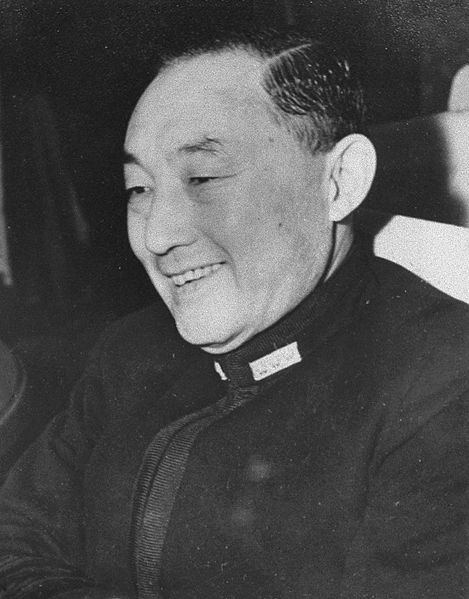
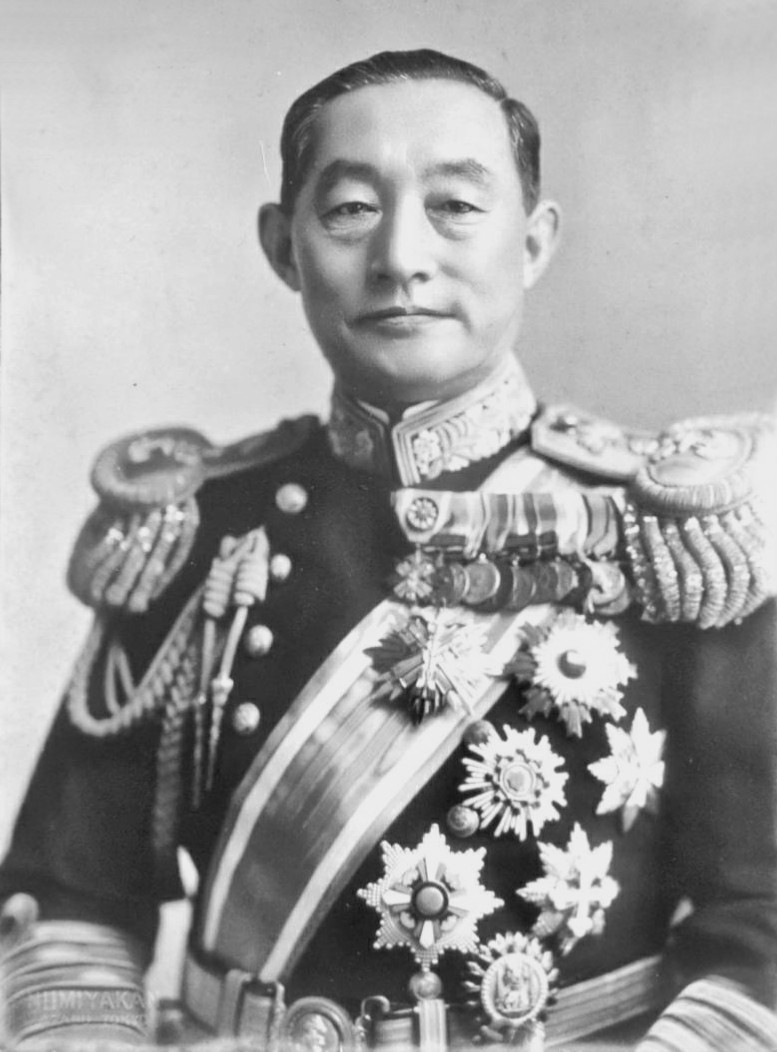
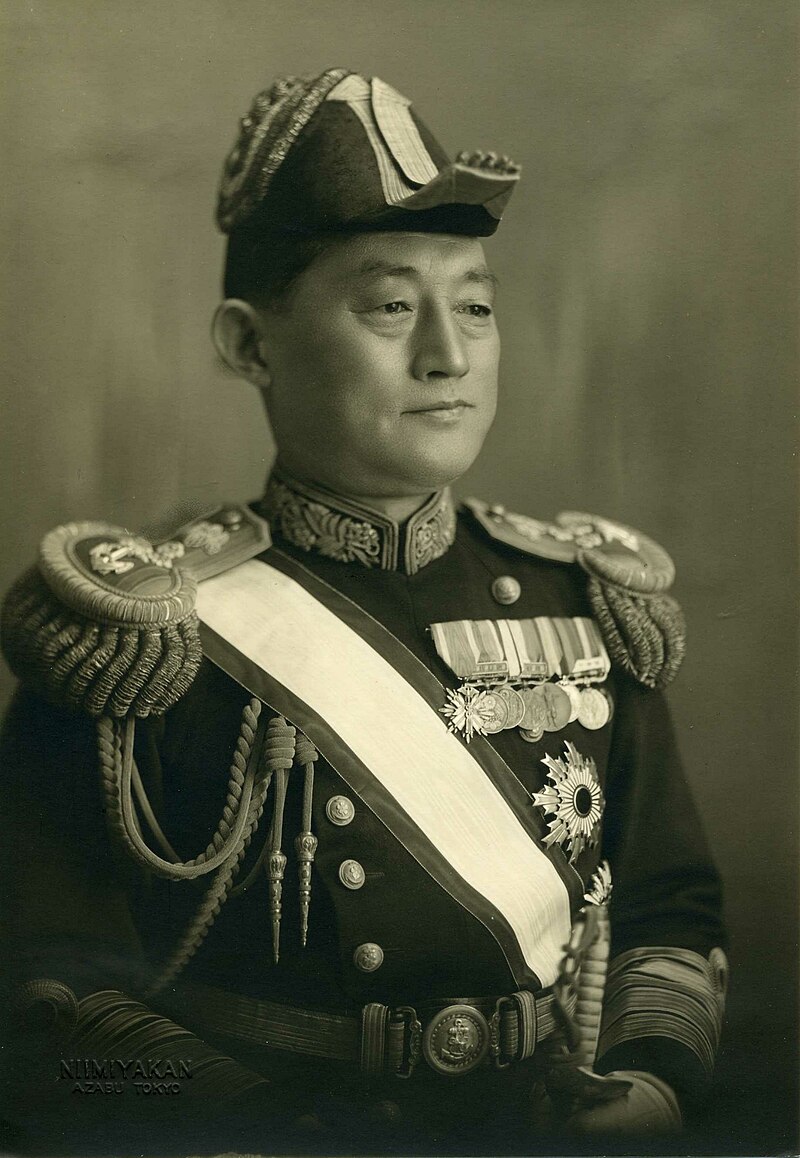
Mitsumasa Yonai (米内 光政 Yonai Mitsumasa, 2 March 1880 - 20 April 1948) was an admiral in the Imperial Japanese Navy, and politician. He was the 37th Prime Minister of Japan from 16 January to 22 July 1940.
Yonai was born in Morioka city, Iwate Prefecture as the first son of an ex-samurai retainer of the Nambu clan of the Morioka Domain. He graduated from the 29th class Imperial Japanese Naval Academy in 1901, ranked 68 of 115 cadets. After midshipman service in the corvette Kongō, and cruiser Tokiwa he was commissioned as ensign in January 1903. He served in administrative positions until near the end of the Russo-Japanese War of 1904 - 1905, when he went to sea again on the destroyer Inazuma and the cruiser Iwate.
After the war, he served as chief gunnery officer on the cruiser Niitaka, battleship Shikishima, and cruiser Tone.
After his promotion to lieutenant commander in December 1912, he graduated from the Naval War College and was assigned as naval attaché to Russia during the height of World War I, from 1915 - 1917.
While overseas, he was promoted to commander; after the collapse of the Russian Empire, he was recalled to Japan and later became executive officer on the battleship Asahi.
He rose to the rank of captain in December 1920 and was
subsequently sent as naval attaché to Poland from 1921 -
1922.
On his return to Japan, he was captain of the cruisers Kasuga (from 1922 - 1923) and Iwate (1923 - 1924), and battleships Fusō (in 1924) and Mutsu (from 1924 - 1925). Yonai was promoted to rear admiral on December 1, 1925.
He became Chief of the 3rd Section of the Imperial Japanese Navy General Staff in December 1926. Within the Navy General Staff, he served on the Technical Council of the Navy Technical Department.
He was appointed Commander -
in - Chief of the First
Expeditionary Fleet, sent to the Yangtze River in
China in December 1928. Following the success of this
mission, he was promoted to vice
admiral in December 1930 and placed in command of
the Chinkai Guard District, in Korea.
Yonai was given command of the IJN 3rd Fleet in December 1932, following which he again commanded the Sasebo Naval District (November 1933), IJN 2nd Fleet (November 1934) and Yokosuka Naval District (December 1935) before receiving appointment as Commander - in - Chief of the Combined Fleet and concurrently the IJN 1st Fleet in December 1936.
While in command at Sasebo, the Japanese Navy was shaken by the "Tomozuru Incident", when it was determined that the basic design of the Chidori class torpedo boats was flawed, thus calling into question the basic designs of many of the warships in the Japanese navy.
While in command at Yokosuka, the February 26 Incident
erupted in Tokyo. Yonai was visiting his mistress in Shimbashi the night the
attempted coup d'état began, only a couple of
blocks away, but knew nothing of the situation until he
returned to base the following morning.
Yonai became full admiral in April 1937 and Navy Minister in the cabinet of Prime Minister Senjūrō Hayashi in 1937. He served in the same position under the subsequent first Fumimaro Konoe and Kiichirō Hiranuma administrations, through August 1939.
After Nobuyuki Abe became Prime Minister, Yonai remained on the Supreme War Council. While Navy Minister, Yonai was known as a man of few words. His speeches tended to be short, and were delivered in his almost indecipherable Nambu accent. Written records of his speeches are only about half the length of his contemporaries.
As Navy Minister, Yonai was alarmed by the growing
tension between Japan and Great Britain and the United
States, at a time when the bulk of the Imperial Japanese
Army was tied down in an apparently unending quagmire in
China. His efforts to promote peace made him unpopular
with ultra - nationalist extremists, and (as with Admiral
Isoroku Yamamoto), he was the target of several
assassination attempts. However, Yonai supported the
construction of the Yamato class
battleships in an effort to maintain a military balance
with the world's other two naval superpowers.
Yonai was appointed Prime Minister of Japan from 6 January 1940, largely with the backing of Emperor Hirohito. As Prime Minister, he continued the strong pro-British, pro-American stance he held as Navy Minister and continued his strong opposition to the Tripartite Pact with Nazi Germany and fascist Italy.
Following the German occupation of the Low Countries and
France in May-June 1940, the Imperial Japanese Army began
to show dissatisfaction with Yonai's anti German policy.
The disagreement became apparent in early July 1940, as
Minister of War Shunroku Hata began to criticize the Prime
Minister openly.
Yonai was forced to resign on 21 July 1940, largely due to
pressure from the pro-Axis
Imperial Japanese Army. The Tripartite Pact was signed on
27 September 1940.
Yonai served as Deputy Prime Minister and concurrently as Navy Minister again under the cabinet of Prime Minister Kuniaki Koiso from 22 July 1944, during which time he returned to the active duty roster from the reserve list. By this time, Saipan had fallen to the Allies.
Yonai remained Navy Minister under the administration of Prime Minister Kantarō Suzuki. In the last few weeks before Japan's surrender, he sided with Prime Minister Suzuki and Foreign Minister Shigenori Tōgō in support of acceptance of the Potsdam Declaration in opposition to Minister of War Korechika Anami, Chief of Naval General Staff Admiral Soemu Toyoda and Chief of the Army General Staff General Yoshijirō Umezu.
Yonai remained Navy Minister in the cabinets of Prime Minister HIH Higashikuni Naruhiko and Prime Minister Kijūrō Shidehara from August 1945, during which time he presided over the final dissolution of the Imperial Japanese Navy.
He played a major role during the International Military Tribunal for the Far East in working with the major defendants, such as Hideki Tōjō, to coordinate their testimonies so that Emperor Hirohito would be spared from indictment. According to his interpreter Suichi Mizota, in March 1946 Bonner Fellers asked him to make Tōjō bear all responsibility for the Greater East Asia War. After the war, Yonai devoted rest of his life to help to rebuild devastated Japan.
Yonai suffered from high blood
pressure most of his life, but he died of
pneumonia in 1948 at the age of 68. His grave is located
at the temple of Enko-ji in his hometown of Morioka.
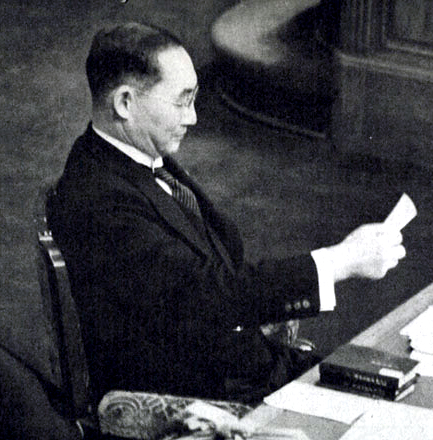
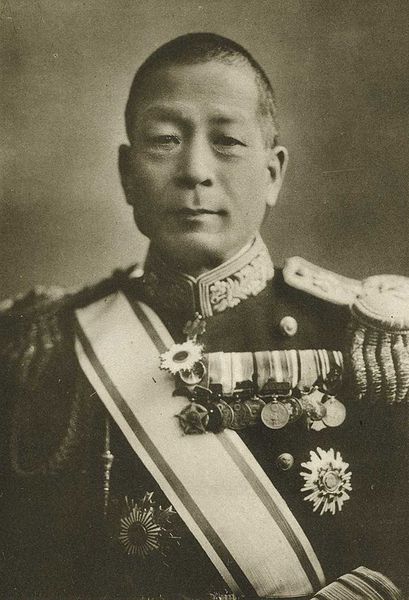
Zengo Yoshida (吉田 善吾 Yoshida Zengo, 14 February 1885 - 14 November 1966) was an admiral in the Imperial Japanese Navy.
Yoshida was born into an impoverished farming family in Saga prefecture in 1885, and was adopted into the family of a local rice merchant. He was a graduate of the 32nd class of the Imperial Japanese Naval Academy in 1904, ranking 12th out of 190 cadets. As a midshipman, he served on the submarine tender Karasaki, and the cruiser Kasuga. He was commissioned as an ensign too late for active service in the Russo - Japanese War.
Yoshida attended naval artillery and torpedo school from 1906 - 1907, and was then assigned to the destroyer Asatsuyu followed by the cruiser Hashidate.
As a lieutenant from 1909, he specialized in torpedo warfare, and graduated from the Naval Staff College in 1913. He was promoted to lieutenant commander in 1915, and commander in 1919, serving in a variety of administrative positions, primarily concerned with training. After his promotion to captain in 1923, he was given his first command in 1924; the cruiser Hirado. He served as chief of staff of the Maizuru Naval District from 1924 - 1925. In December 1927, he assumed command of the battleship Kongō, and from December 1928, battleship Mutsu.
Yoshida was promoted to rear admiral on 30 November 1929. He served in numerous staff positions until his promotion to vice admiral on 15 November 1934. Yoshida was commander - in - chief of the IJN 2nd Fleet from 1936–1937, and commander - in - chief of the Combined Fleet from 1937 - 1939.
On 30 August 1939, Yoshida became Navy Minister under the cabinets of Prime Minister Abe Nobuyuki, Yonai Mitsumasa and Konoe Fumimaro. As Navy Minister, Yoshida was vehement in his opposition to signing of the Tripartite Pact between Japan, Nazi Germany and fascist Italy. He also strongly opposed the idea of war against the United States. He was forced to resign due to illness, and the treaty went ahead despite his strong misgivings.
Yoshida was promoted to full admiral on 15 November 1940. After the start of World War II, Yoshida was assigned a combat command, and took control of the China Area Fleet from November 1942 - December 1943. He then served as a member of the Supreme War Council until his retirement on 1 June 1945.